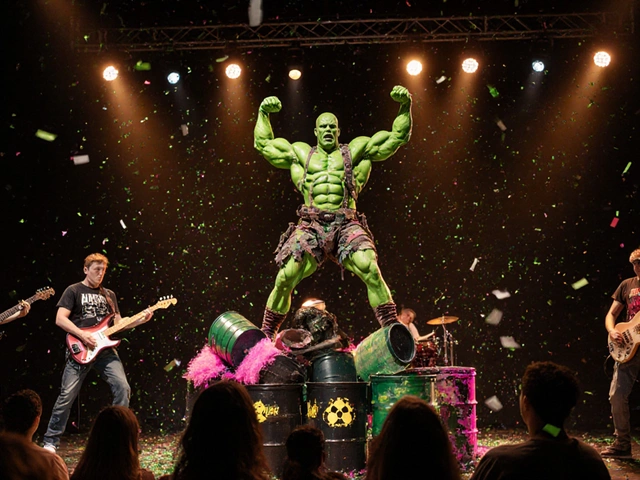Digital Artist Earnings Tracker
Total Reported Earnings (2024-2025)
Signature Sale: "Everydays: The First 5000 Days" (Christie's)
Earnings: $69,000,000
Net earnings after taxes and fees: ~$58 million
Signature Sale: "The Merge" (Nifty Gateway)
Earnings: $91,800,000
Algorithmic scarcity model
Signature Sale: "REPLICATOR" (Christie's)
Earnings: $4,200,000
Blends cyberpunk aesthetics with traditional illustration
Artist Comparison
When it comes to earnings, Beeple is a digital artist who shattered records with a single NFT sale that topped headlines worldwide. That deal cemented his reputation as the highest paid digital artist of the modern era, but the story doesn’t end there. A handful of creators have followed suit, turning pixels into multi‑million‑dollar fortunes.
Why Digital Art Became a Money‑Making Machine
The explosion began in 2017 when the first major non‑fungible token (NFT) marketplaces opened. These platforms gave creators a way to prove ownership of digital works on the blockchain. NFT a unique cryptographic token that represents ownership of a digital asset quickly attracted collectors who were eager to own a piece of internet culture.
Two technical ingredients made the market surge: the rise of Ethereum the leading blockchain for NFTs, known for its smart‑contract capabilities and the ability of major auction houses, like Christie's Auction a historic art house that began handling NFTs in 2021, to lend legitimacy. When collectors saw a $69million sale at Christie’s, many assumed the market would stay at that level forever.
Top Earners: Who Leads the Pack?
Three names dominate the headline statistics for 2025:
- Beeple real name Mike Winkelmann, a US‑based digital illustrator known for his "Everydays" project
- Pak an anonymous digital creator often credited with pioneering generative art on the blockchain
- Mad Dog Jones real name Michah Dowbak, a Canadian artist blending cyberpunk aesthetics with traditional illustration
Below is a quick snapshot of their most lucrative deals.
| Artist | Signature Sale | Year | Total Reported Earnings (USD) |
|---|---|---|---|
| Beeple | "Everydays: The First 5000 Days" (Christie's) | 2021 | $69,000,000 |
| Pak | "The Merge" (Nifty Gateway) | 2022 | $91,800,000 |
| Mad Dog Jones | "REPLICATOR" (Christie's) | 2023 | $4,200,000 |
Even though Pak’s $91.8million sale technically eclipses Beeple’s record, the art world still treats Beeple as the pioneering figure whose brand value extends far beyond a single auction. Pak remains an enigma, selling works through algorithmic drops that often involve thousands of buyers buying fractions of a piece-an approach that inflates total sale volume but makes individual earnings less transparent.
Beeple’s Path to the Top
Beeple started as a motion‑design freelancer, creating short loops for advertising agencies. In 2007 he launched the "Everydays" project, posting a new digital image every day without fail. The discipline built a massive library of high‑resolution, sci‑fi‑infused scenes.
The turning point arrived when he minted "Everydays: The First 5000 Days" as an NFT and listed it at Christie's. The auction drew institutional investors, celebrities, and crypto whales. A post‑sale analysis by a leading market research firm showed Beeple’s net earnings after taxes and fees hovered around $58million, enough to place him in the billionaire‑club of living artists.
Beyond the record, Beeple leverages brand partnerships with luxury fashion houses, collaborates on metaverse installations, and licenses his imagery for video game assets. Each side‑deal adds a few million dollars annually, reinforcing his position as the most financially diversified digital creator.

Pak’s Generative Magic
Pak’s identity is deliberately hidden, but the numbers speak loudly. In 2022, Pak launched "The Merge" on Nifty Gateway a curated NFT platform that supports large‑scale drops. The piece wasn’t sold as a single token; instead, collectors bought "mass" that aggregated into a single artwork, driving total sales to $91.8million within minutes.
Pak’s genius lies in creating scarcity through algorithmic scarcity-each purchase reduces the remaining supply, encouraging rapid buying. This model has inspired dozens of imitators and turned generative art into a core revenue stream for blockchain artists.
Mad Dog Jones: A Cyberpunk Storyteller
Mad Dog Jones blends hand‑drawn illustration with 3D rendering, often depicting neon‑lit cityscapes. His 2023 Christie’s sale, "REPLICATOR," fetched $4.2million, making him one of the few non‑crypto‑native artists to transition smoothly into high‑end auction houses.
His earnings are complemented by collaborations with major music festivals and limited‑edition physical prints sold through high‑end galleries. While his numbers are lower than Beeple’s, his diversified income streams illustrate how a digital style can thrive in both virtual and physical markets.
Market Forces Shaping Earnings
Several macro‑trends dictate why these artists can command such sums:
- Crypto volatility: When Ethereum’s price spikes, NFT valuations rise in tandem, inflating headline numbers.
- Institutional interest: Auction houses, hedge funds, and even museums now view NFTs as alternative assets, driving demand.
- Metaverse integration: Brands are buying digital art to decorate virtual real‑estate, opening a new licensing market.
- Platform fees: Marketplaces like OpenSea the largest NFT marketplace by volume charge 2.5% on sales, which reduces net earnings but also provides exposure to millions of users.
These forces mean the highest‑paid title can shift quickly as new tokens launch and as regulators tighten or loosen rules around crypto assets.

Looking Ahead: Who Might Overtake the Leader?
Analysts at a leading art‑economics firm predict that the next wave of high‑earning digital creators will emerge from the Metaverse persistent virtual environments where users buy, sell, and showcase digital assets. Artists who can design immersive installations for platforms like Decentraland or The Sandbox may command multi‑million deals for virtual gallery spaces.
Additionally, the rise of "play‑to‑earn" games that embed unique artwork as in‑game items could create a revenue stream rivaling traditional NFT sales. If a creator ties a popular game character to an exclusive visual asset, the resulting royalties could eclipse even Beeple’s single‑sale record.
For now, however, the three names above remain the benchmark. Their combined earnings surpass $165million, a figure that dwarf most traditional painters and sculptors.
Key Insights
- Beeple holds the cultural edge that translates into higher brand value, even if Pak’s single drop generated more cash.
- Generative art and algorithmic scarcity have reshaped how NFTs are priced.
- Institutional adoption of NFTs through auction houses legitimizes high‑price sales.
- Future earnings may shift toward artists embedded in the metaverse and gaming ecosystems.
Frequently Asked Questions
Who currently holds the record for the most expensive NFT sale?
Pak’s "The Merge" sold for $91.8million on Nifty Gateway in 2022, making it the single highest‑priced NFT to date.
How does Beeple earn money beyond the Christie's auction?
Beeple licenses his imagery for fashion collaborations, creates metaverse installations, and sells limited‑edition physical prints, each adding millions to his annual income.
What role does Ethereum play in digital art earnings?
Ethereum provides the smart‑contract infrastructure that certifies ownership of NFTs. When ETH’s price rises, the dollar value of NFT transactions typically increases as well.
Can new artists break into the top‑earning list?
Yes. Artists who tap into emerging platforms, integrate with the metaverse, or pioneer novel tokenomics can command multi‑million sales, especially if they secure backing from institutional collectors.
What are the biggest risks for digital artists aiming for high earnings?
Market volatility, regulatory crackdowns on crypto, and platform fee changes can all erode profits. Artists also face reputational risk if they rely on hype rather than solid creative value.





